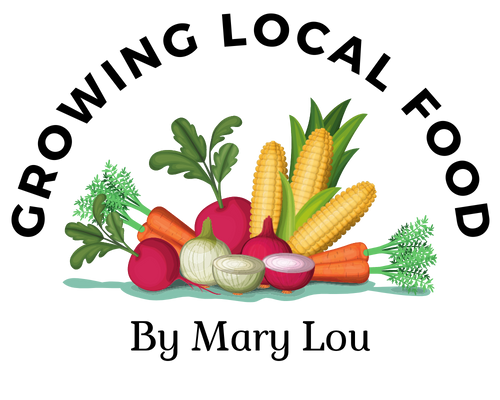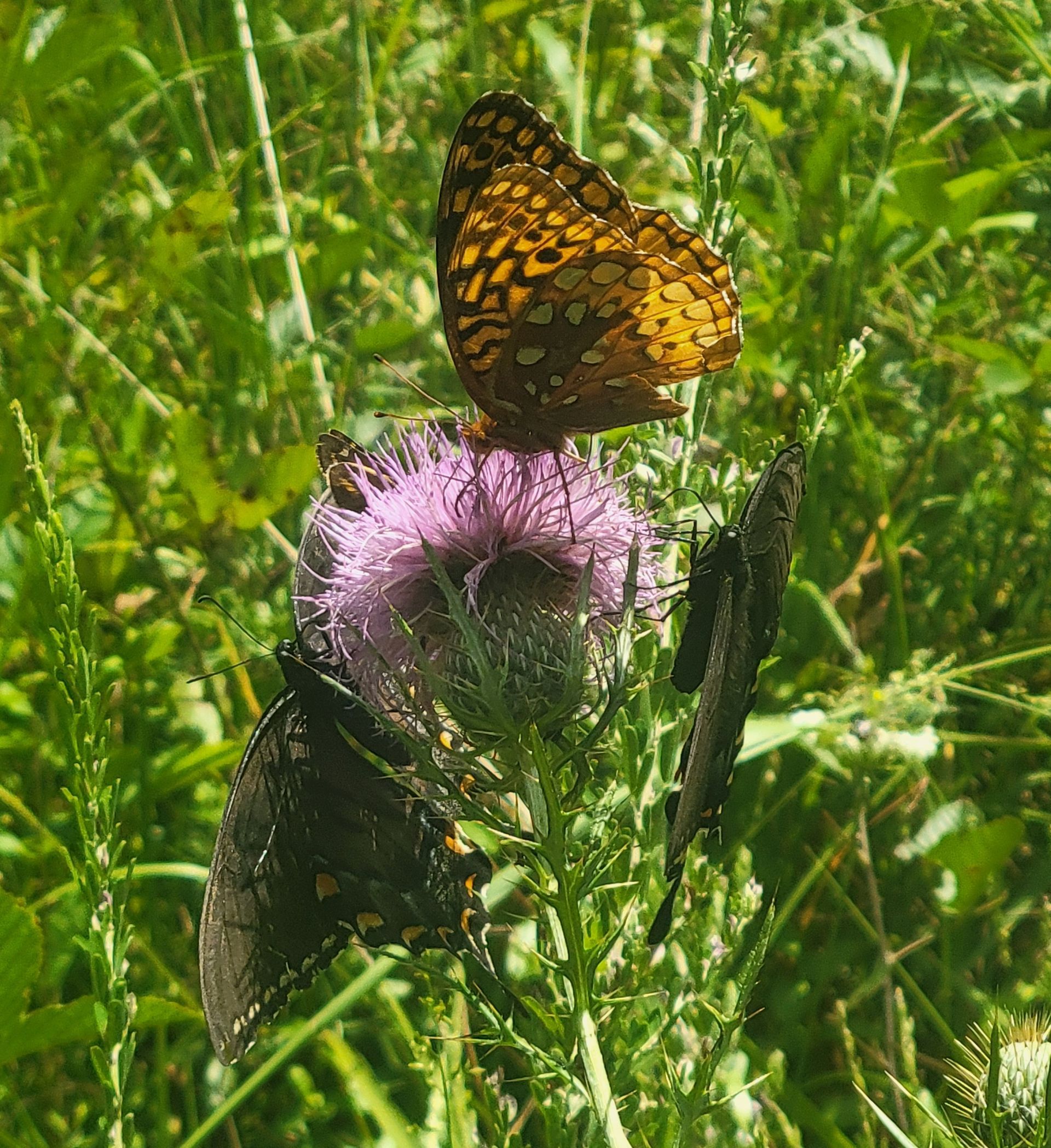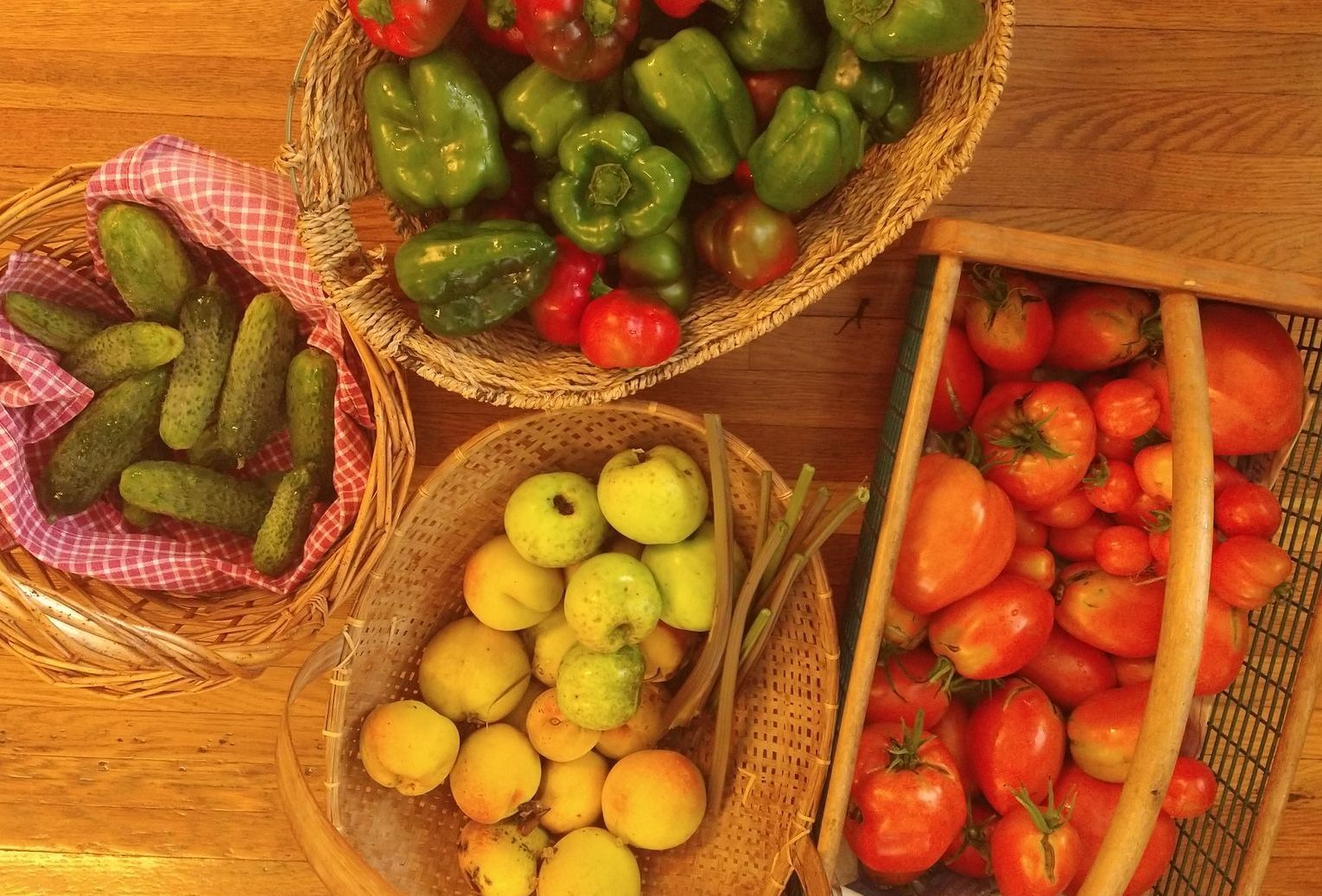Maximizing Harvest: Techniques to Extend your Growing Season
Why grow food more months of the year?
Many of us eat from our garden year-round because our summer's work makes this possible. We dry, can and freeze our garden produce. We even tuck pumpkins, apples and onions into a root cellar, similar to squirrels preparing for the winter ahead. It is wonderful in mid-winter to make meals from our summer garden's harvest. However, it is also wonderful to begin harvesting earlier in the springtime and continue harvesting after the first frosts. If you have the energy, and you enjoy continuing the harvest for a longer season, you'll find some fun possibilities in the methods that I've used and am sharing here.
Methods for extending the growing season:
Row covers: Some crops growing in the garden can be covered in the late autumn or early spring to extend their growing time. If crops are covered to protect them from the cold, some cold-tolerant seedlings can be planted during spring frosts. Other crops can have their growing time extended into the first autumn frosts and even winter.
One simple cover is the fabric row covers. These covers appear gauze-like and are made from spun-bonded polyester or polypropylene. They are supported by wire hoops that can be left on throughout the year. When a cover is needed, it can be held in place with plastic clamps. These row covers have allowed us to grow tender plants like lettuce more months of the year. However, it only takes one night of temperatures falling into the lower 20’s to lose a precious crop.
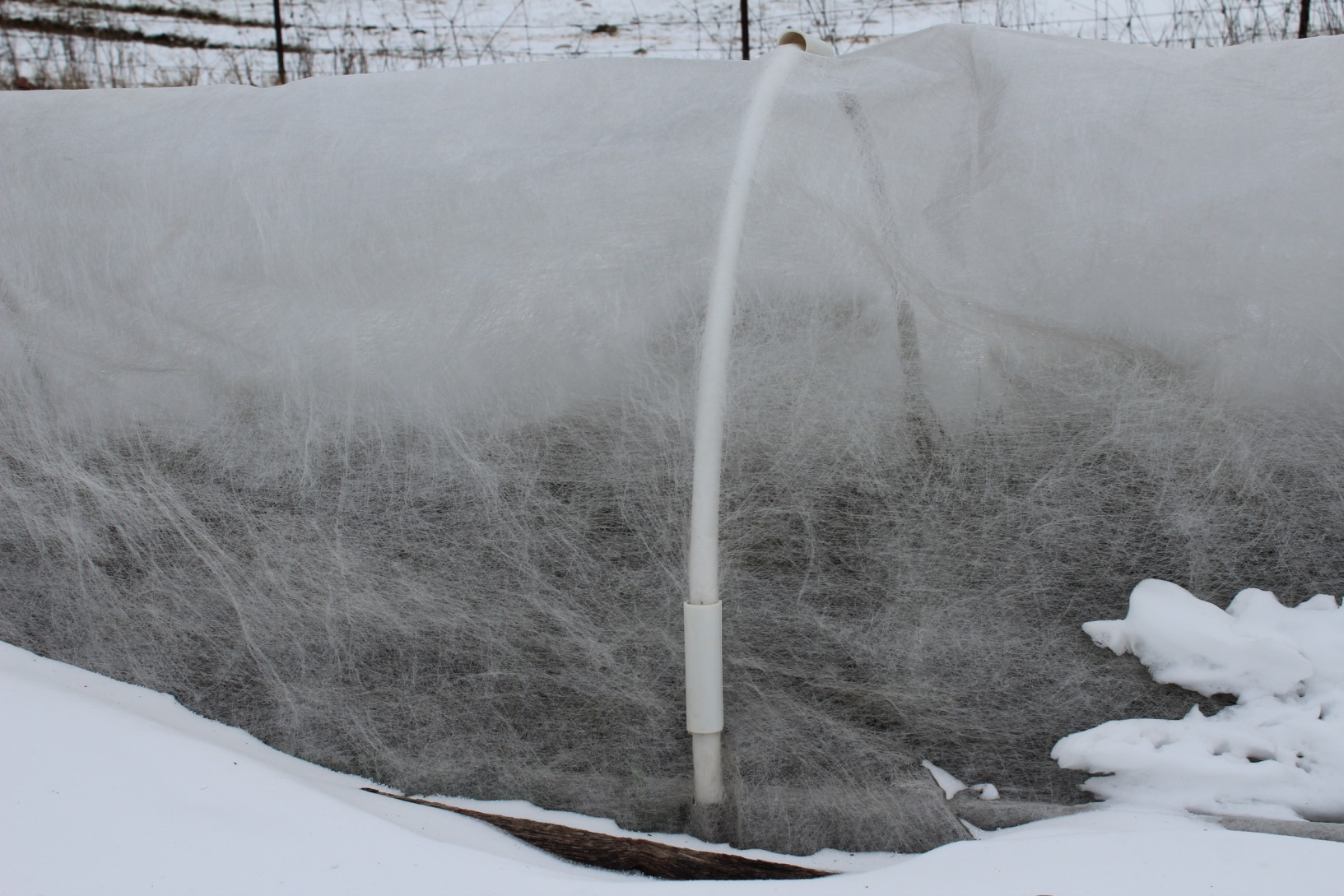
Cold frame:
We constructed our cold frame with a wooden frame and an old glass window for its lid. It is a bit more sophisticated than the row covers, and has been hauled here and there in the winter garden by handles attached to each end. It is wonderful for protecting lettuce and carrots from frosts and cold winds. The sun poses more danger than the cold, because a sunny day with the temperatures only in the single digits can quickly cook the lettuce plants if the lid is not propped ajar. I do admit that diligence is a small price to pay for fresh lettuce when there’s snow on the ground!
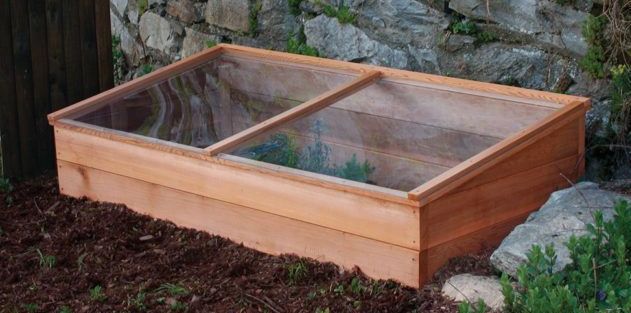
Sometimes, less technology works best. Last winter we ate root crops like carrots, beets and turnips throughout the winter, simply by giving them a good cover of straw. One other trick was to dig up a few heads of cabbage in the fall and invert them into their hole with their roots sticking up to mark their locations. In February, it was simple to dig them up, remove the dirty, outer leaves and have beautiful heads of cabbage.
Lean-to greenhouse: Our big project, both in money and my husband’s labor, was a lean-to greenhouse. It’s wonderful to have winter fresh lettuce, chard, spinach, parsley and peas to supplement the canned and frozen vegetables. The floor is made from compost with wood-plank walks. Because we lived at 40 degrees latitude, the tempered, insulated glass is positioned at a 60 degree angle to absorb the low winter sun. A sunny, below-freezing January day will raise the interior temperature quickly into the 80’s. We then depend on bi-metal openers to assure auto-ventilation. Water-filled plastic jugs, painted black, hold some of this heat into the night. Two water-filled, black, 50-gallon barrels collect and release heat more slowly.
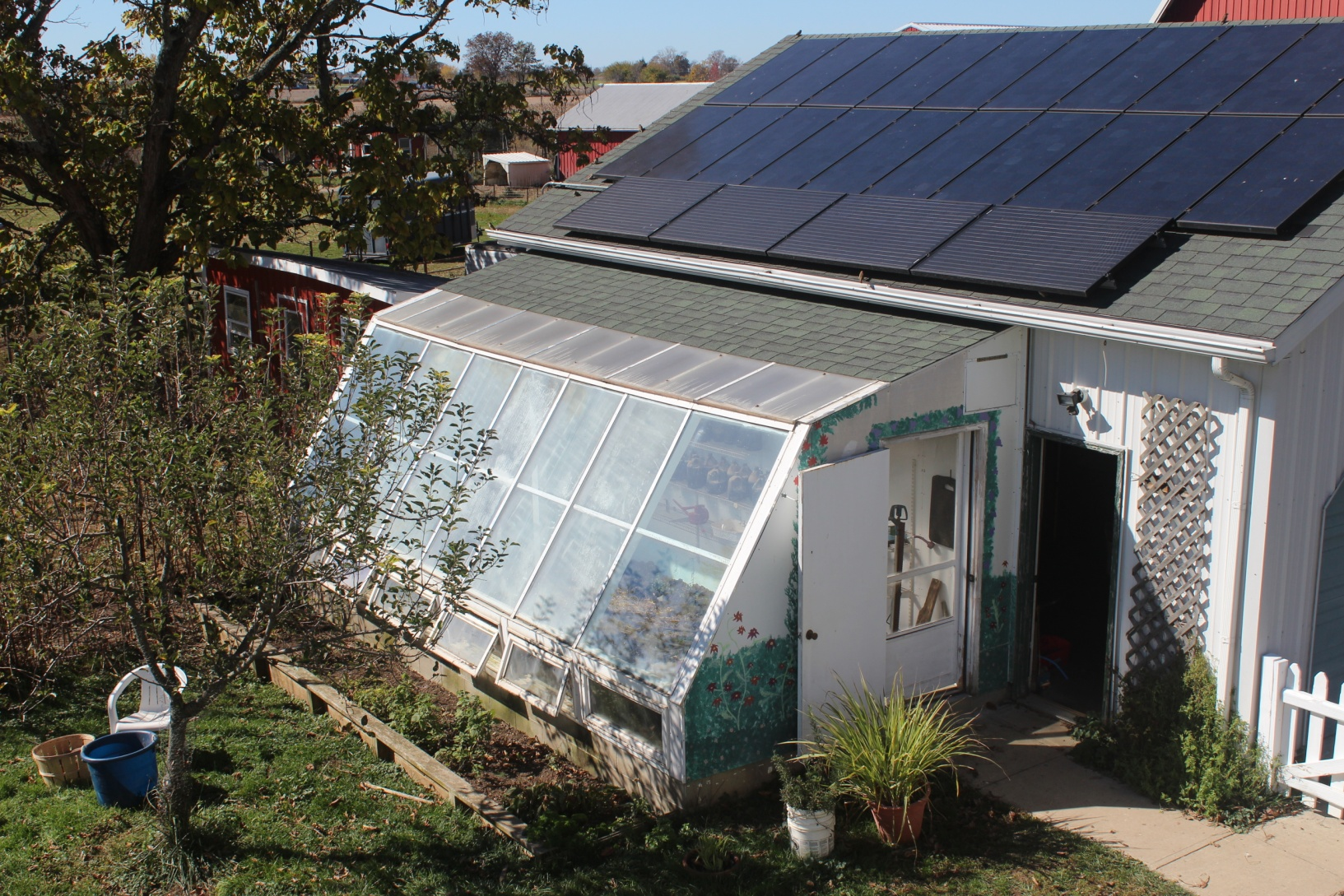
The biggest secret to successful winter crops is choosing cold-tolerant plants like lettuce, chard and root crops. All the information to build and use this project was obtained from the book, The Food and Heat Producing Solar Greenhouse by Bill Yanda and Rick Fisher.
The concept of choosing a southern-facing wall and providing a wind-barrier does not need to be this elaborate for successful winter crops. A frame with plastic walls can provide crops through the winter, providing the crops that you choose will tolerate cool nights.
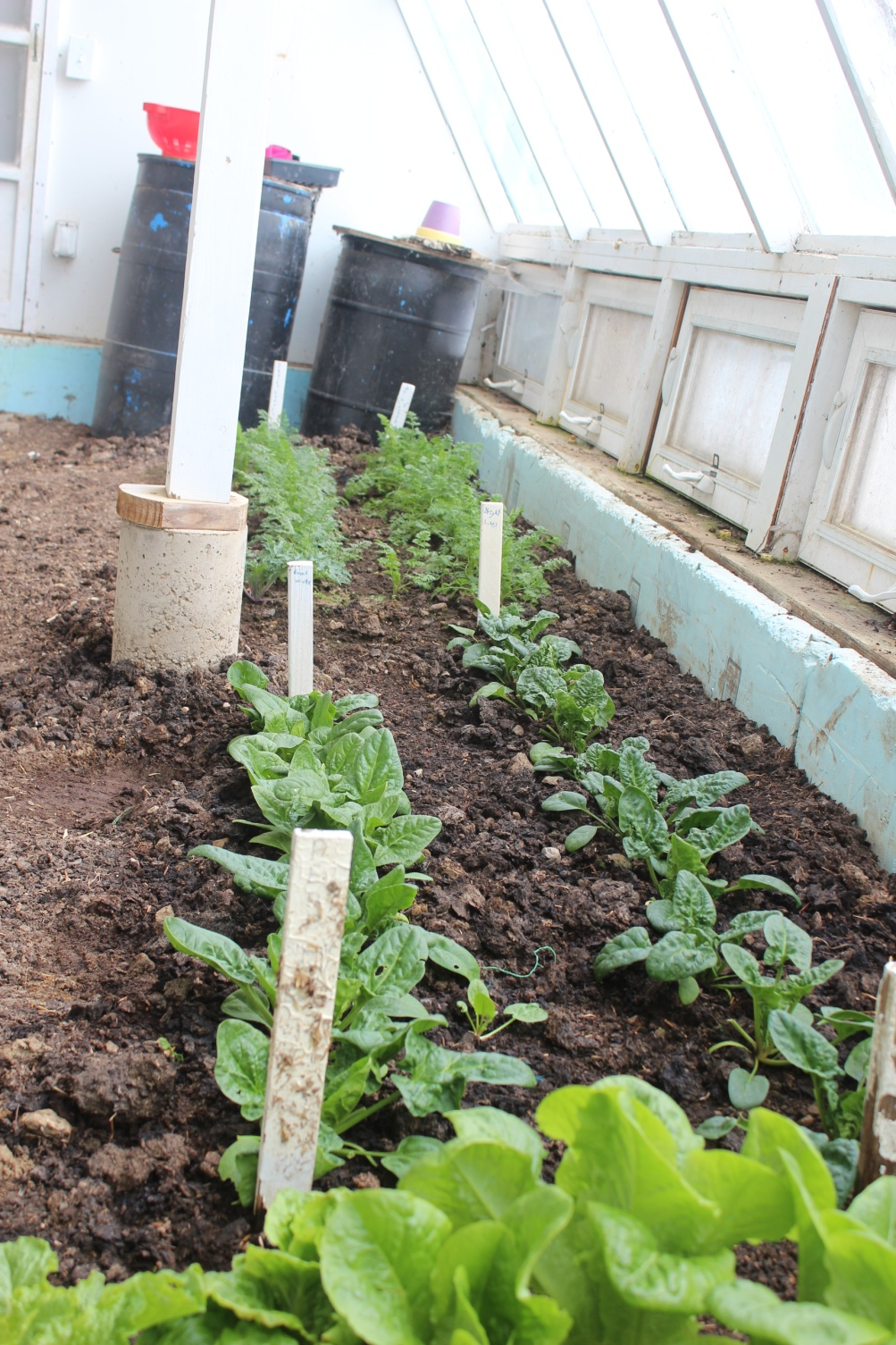
Hoop houses: Hoop houses can be less expensive than either a free-standing or lean-to greenhouse. Our first hoop house was made from a kit which we purchased from Farm Tech for about $2,000. It was 24 x 28 feet and we made four wide beds in it. Ends were added to enclose it, but besides being able to open both ends for ventilation, the sides rolled up when additional ventilation was required in the summer. Non-treated wood was used to border the beds which were filled with compost. Watering was done with a hose, though water from the roof was also collected in fifty gallon drums to gravity-feed to the plants.
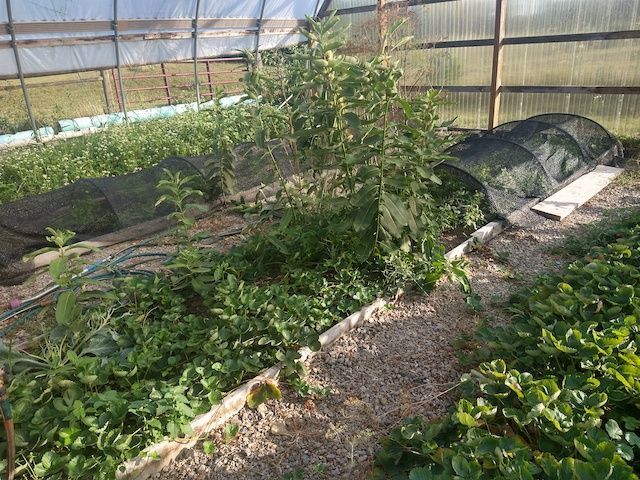
Since moving to a small homestead in NE Tennessee, we’ve built a 12’ x 20’ hoop house without purchasing a kit. It is made with six mil greenhouse plastic and one-inch PVC pipe was used for the hoops. Both ends allow for ventilation and the sides can also be rolled up. There is one central path inside with a bed on either side.
By planting vegetables appropriate to the season, we were able to extend the growing season to include most of the year with both hoop houses.
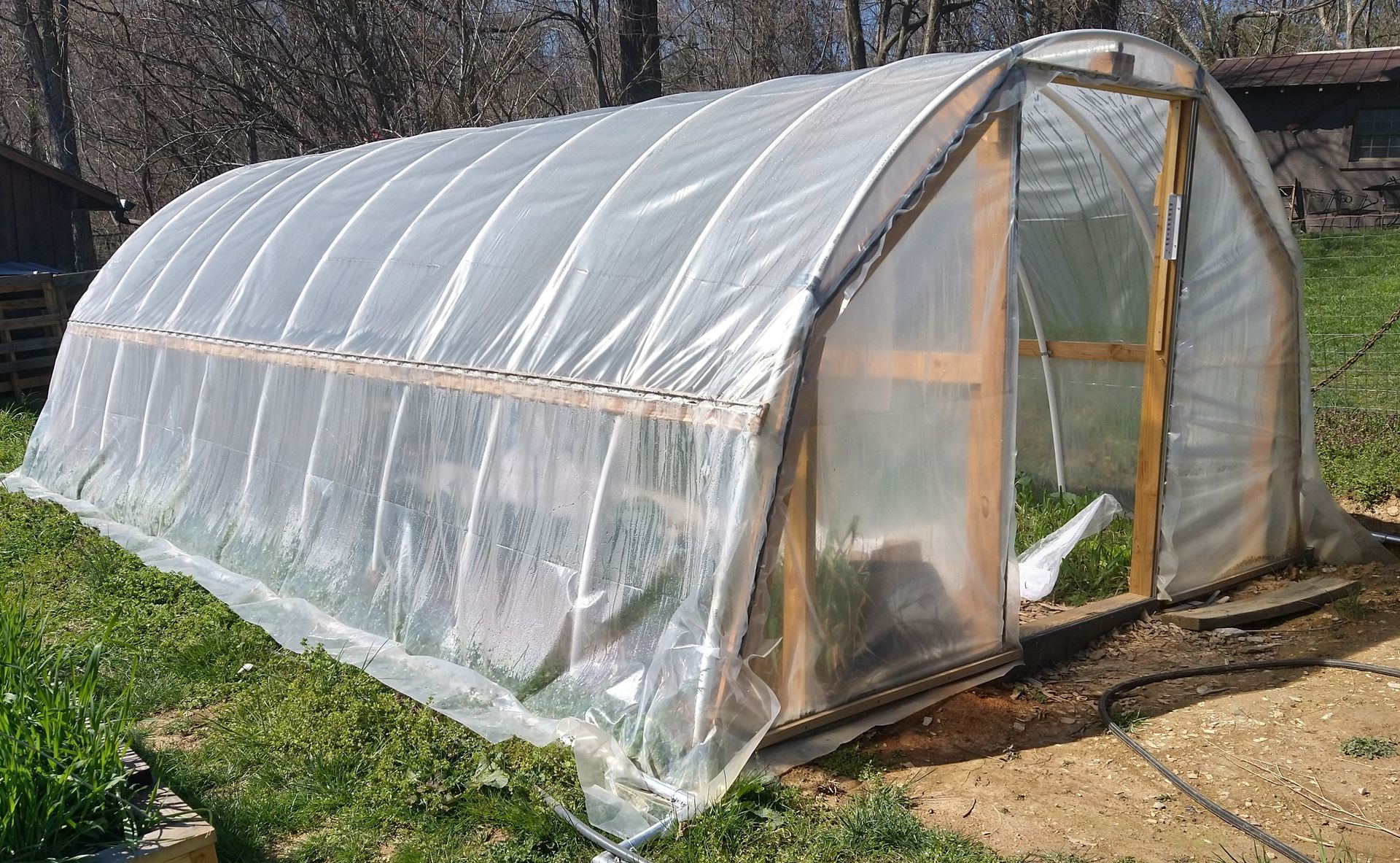
Plant successive crops: If you want to extend your growing season, don’t plant and harvest everything at the same time. Here are some ideas for keeping your garden going longer by planting outdoors seeds more frequently. The following is calculated for a mid-October frost date:
In the springtime, plant tomatillos and parsnips for a late harvest. Both will survive after a frost, and the parsnips will actually taste better.
After solstice, or about June 20th, plant winter leeks in a shaded spot. Give them heavy mulch and fertilizer, and harvest them around New Years. Rutabagas and turnips can also be planted at that time. Rutabagas are a new food to me, but they are a cross between a cabbage and turnip, and have a higher nutritional value than turnips.
Twelve weeks before the first frost, or about the end of July, plant brassica, like cabbage and Brussel sprouts, for a late harvest.
Ten weeks before frost, or about August sixth, you can plant endive and winter lettuces, like “Winter Density” or “Rouge d’Hiver.
Seven weeks before frost, or towards the end of August, plant kale and collards.
Five weeks before frost, or about September 10th, plant arugula, chard, mache ("corn salad") and a spring-spinach, like Winter Bloomsdale.
Three weeks before frost, or towards the end of September, plant lobe radishes for late fall and early winter harvests.
Two weeks before frost, or about the first week of October, plant garlic cloves which will be harvested as full heads of garlic the following early-July.
Many herbs are perennials. Mulch sage, rosemary and thyme—you can harvest them during the winter, and they’ll be ready to grow again the following spring.
Animals are a big help: Finally, our animals give a big boost to year-round food from our farm. The meat, eggs, milk and milk products supplement the garden produce and help create winter banquets. The animals also provide valuable compost which is necessary to grow nutritious food. Bees pollinate the crops and provide honey.
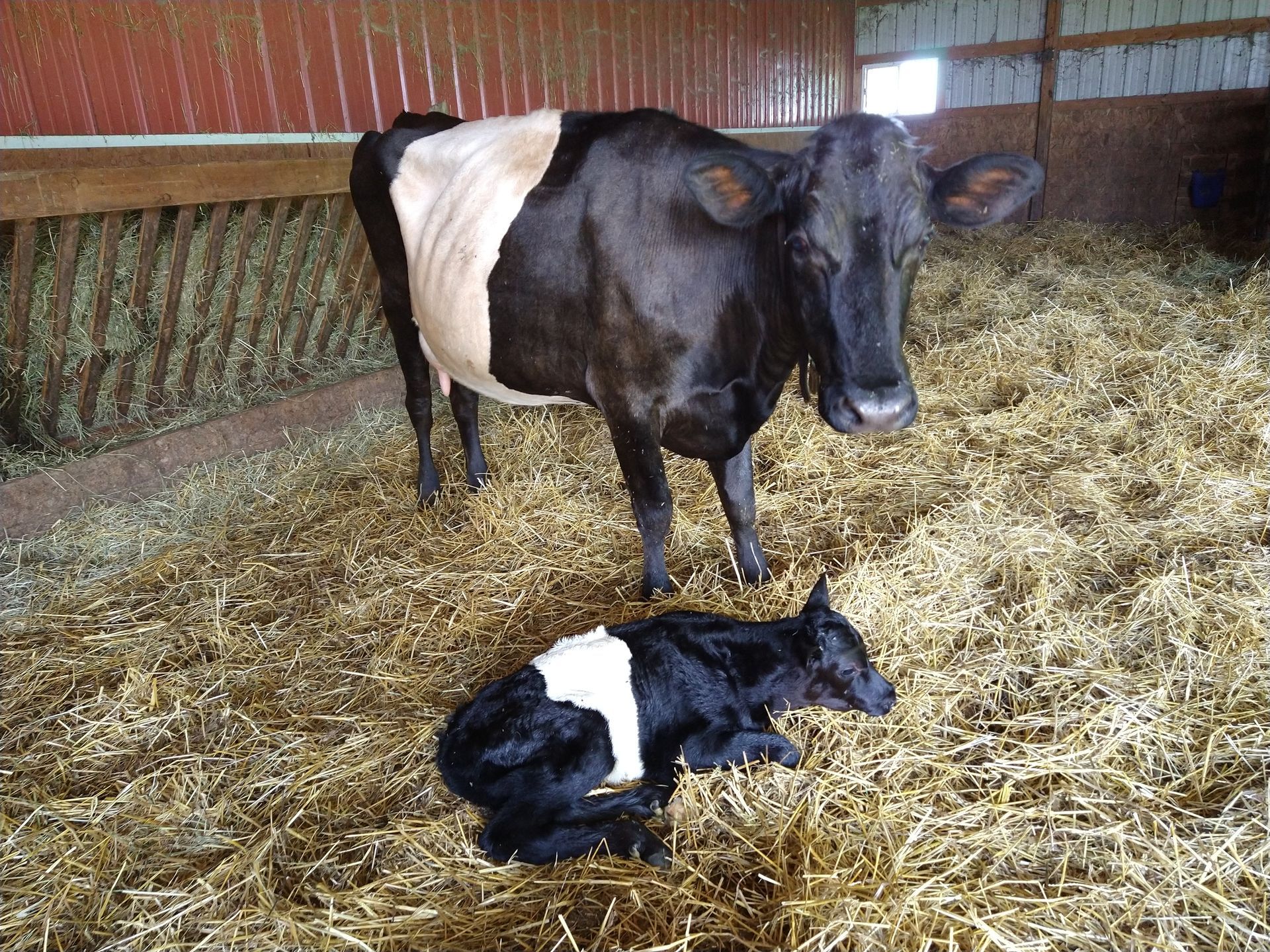
A Dutch Belted cow with her new calf
Despite our best efforts, not many of us can grow most of the food we eat, even when we extend the growing season to most of the year. I also understand that not everyone can have livestock in their backyard! But when we buy what we can't produce from local farmers, we help make our local communities more sustainable. When we also focus on using and saving the genetics of heritage breed animals and plants, we help not only our community, but we're also helping future generations to be able to grow their own food.
